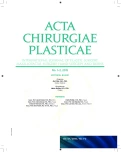S. William A. Gunn: Dictionary of Disaster Medicine and Humanitarian Relief (Second Edition)
Published in:
ACTA CHIRURGIAE PLASTICAE, 57, 1-2, 2015, pp. 27-28
Springer Science+Business Media New York Heidelberg Dordrecht London 2013, 208 pp. ISBN 978-1-4614-4444-2; ISBN 978-1-4614-4445-9 (eBook)
Mass disasters, whether caused by natural, industrial or other man-made events, require rapid mitigation of the resultant consequences, for which equally rapid, simple and proper communication is an essential prerequisite for multidisciplinary rescue teams from various fields. Such communication is the only means by which lives can be saved and further damages prevented. In today’s globalized world, wherein international co-operation in cases of mass disaster has become quite typical and necessary, the issue of inter-communication and understanding among teams has become all the more urgent. This also applies to prevention.
The Gunn Dictionary of Disaster Medicine and Humanitarian Relief is an invaluable tool for all those involved in mitigating the effects of mass disasters, including rescue workers, paramedics, physicians, technicians, engineers and meteorologists, law enforcement as well as organizers of national and international authorities, politicians, journalists and functionaries of governmental and non-governmental organizations. This is the second, revised and expanded edition of this dictionary, originally published by the same author in 1990 (1); it has also been translated into French, Japanese and German languages. The author is highly regarded as one of the most competent, renowned experts in the field of mass casualty management and disaster medicine, having served as longtime Director of the World Health Organization’s (WHO) Emergency Humanitarian Operations; a United Nations (UN) consultant in the field of disaster medicine; a founder and former President of the World Association for Disaster and Emergency Medicine (WADEM); and former President of the International Federation of Surgical Colleges (IFSC).
Currently, Dr. Gunn serves as President of the International Association for Humanitarian Medicine (IAHM). In addition to his contributions to medical science, organizational work and international engagements, the author has dedicated a considerable amount of time to defining and compiling lexical terminology for major catastrophes and disaster medicine, which stemmed from his tremendous amount of experience and understanding of the field. These efforts during his tenure at WHO resulted in a lexicon for use in the creation of documents, tools, and dictionaries such as this, which not only facilitate communication among domestic or international teams on the ground, but also among those participating in consultations, communications and planning at organizational centers. Until publication of this new edition, Dr. Gunn´s dictionary remains the only and definitive work in this particular field.
It is certainly worthwhile to peruse the beautifully written preface by Dr. Halfdan Mahler, a former director-general of the WHO in Geneva, Switzerland. The dictionary is divided into two parts. Part one comprises a custom dictionary with alphabetically sorted entries, which are followed by a clear definition and simultaneous cross references pertaining to similar, or semantically, related complementary information with entries and synonyms. For example, among its vast coverage it contains an extensive array of definitions concerning essential surgery, humanitarian surgery, surgical conditions, rural health or many terms relevant to burns and fires. Part two contains a rich representation of the most frequently used acronyms and abbreviations used in the field of catastrophes, disaster medicine and humanitarian relief. Overall, this new edition contains more than 3,000 entries with up-to-date supplementation of terms related to climate change, cyberwar and bioterrorism. It is highly readable, well-organized, and easy to understand, which facilitates quick orientation to pertinent issues. Every worker involved in disciplines dealing with natural or industrial mass disasters, whether in domestic or international environments, should have this invaluable tool close at hand. It can also serve as an excellent teaching tool and it is, therefore, not surprising that it has been recommended as the official teaching aid in numerous courses organized by the UN and others. Numerous authorities and institutions dealing with, for example, issues related to refugees, migration, conflicts or terrorism would benefit from having this tool available when dealing with current global challenges.
The book and its author have also received international awards: For his lifelong contributions, Dr. Gunn received the A. Meneghetti Award for Science and Humanism in 2014 (2). The Dictionary of Disaster Medicine and Humanitarian Relief is heartily recommended; not only for use among workers of integrated rescue systems, but also other professionals from various disciplines in our country.
Corresponding Author:
Assoc. Prof. Leo Klein, M.D.
Div. of Plastic Reconstructive Surgery and Burns Treatment, Dept. of Surgery Charles University Teaching Hospital
Sokolská 581, 500 05 Hradec Králové, Czech Republic
E-mail: leo.klein@fnhk.cz
Sources
1. Klein L. S.W.A. Gunn – Multilingual Dictionary of Disaster Medicine and International Relief. Recenze. Voj. zdrav. Listy. 1993; LXII(1/2):61–2.
2. Mezoui HD. IAHM President Wins the A. Meneghetti Award for Science and Humanism. J. of Humanitarian Medicine. 2014; XIV(3):36.
Labels
Plastic surgery Orthopaedics Burns medicine TraumatologyArticle was published in
Acta chirurgiae plasticae

2015 Issue 1-2
Most read in this issue
- Delay Procedure in the perforasome era: A case in a DIEAp Flap
- Vasospasm of the Flap Pedicle – Magnesium Sulphate Relieves Vasospasm of Axial Flap Pedicle in Porcine Model
- PIP implants - current knowledge and literature review
- A novel model to evaluate the learning curve in microsurgery: Serial anastomosis of the rat femoral artery

